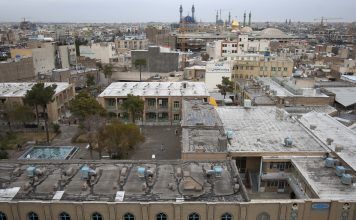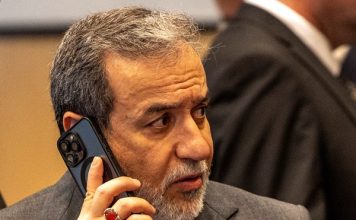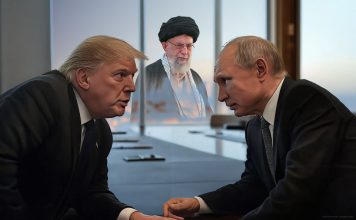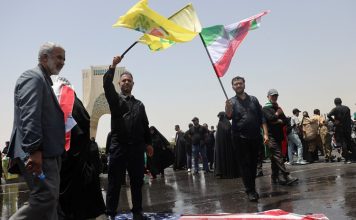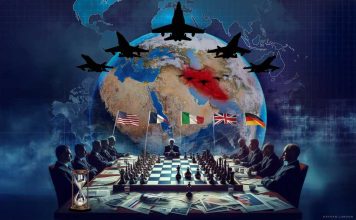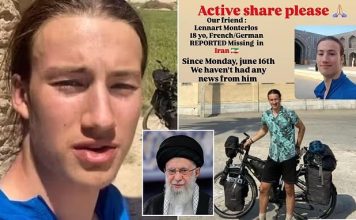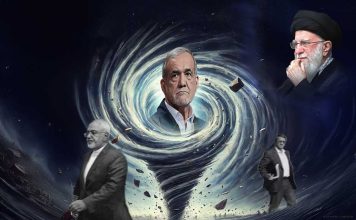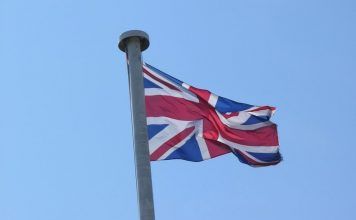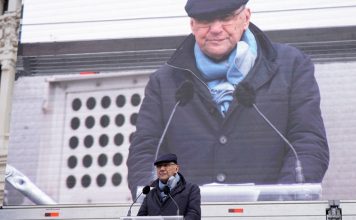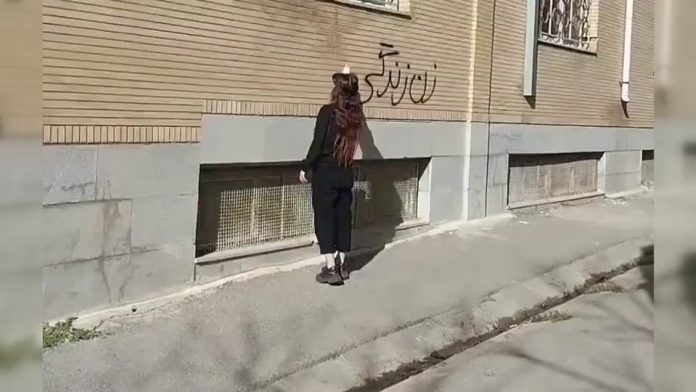
The Islamic Republic faces another wave of protests in the run-up to the anniversary of the death of Mahsa Amini, even though it has developed new tactics and methods to suppress the nationwide uprising, according to Kambiz Ghafouri, an analyst at Norway-based human rights organization, Iran Human Rights (IHRNGO).
“While propaganda and disinformation have always played a key part in the Islamic Republic’s policies, we’ve seen a deepening of ‘othering.’ This includes calling Kurdish and Baluch protesters separatists, terrorists and drug smugglers, and trying to link cases to enemy states like Israel and the United States,” Ghafouri told Kayhan Life.
“We have also noticed an increase in the use of pellet guns targeting protesters’ eyes and the head,” Ghafouri said. “Since the reasons for the protests haven’t been resolved and the situation has worsened, from the economy, to social and political decline, we should also anticipate a new wave of protests.”
Twenty-two-year-old Jina Mahsa Amini was arrested by Iran’s morality police in September for failing to observe the country’s forced hijab law. According to United Nations officials, Amini was tortured while in police custody, and the torture led to her death.
Anti-government protests erupted across all of Iran’s 31 provinces following media coverage of Amini’s death. The protests have carried on in several areas of Iran, making them the longest and most widespread since 1979. Crippling inflation, rising poverty, international sanctions and government corruption in Iran have also given rise to the protests.
[aesop_image img=”https://kayhanlife.com/wp-content/uploads/2023/02/hormozgan.jpg” panorama=”off” credit=”People protest against the regime in Hormozgan province. KL./” align=”center” lightbox=”on” captionsrc=”custom” captionposition=”left” revealfx=”off” overlay_revealfx=”off”]
In the last 12 months, Iran’s security forces have been condemned by human rights bodies, state leaders and prominent figures for their brutal crackdowns on protesters, particularly those from minority groups, as well as women and children.
Women are increasingly being targeted. In an effort to deter them from omitting to wear the hijab in public, Iran’s parliament has pushed through a raft of measures to enable tougher punishments for violations.
More than a million women have been threatened with confiscation of their vehicles since April 15, after surveillance cameras caught them driving without their headscarves on, according to a July report by Amnesty International. The report also held that 2,000 cars had been confiscated, and more than 4,000 “repeat offenders” had been referred to law courts across the country.
Amnesty International Reports on Iran’s Crackdown to Enforce Hijab, Including Vehicle Confiscation
“Female protesters posting unveiled pictures of themselves on social media are also being arrested, many of whom are nameless,” Ghafouri said. “While we may not be seeing street protests, people are still resisting every day in different ways. We’ve seen so many brave women refuse to give in to the forced hijab and face the consequences.”
The hashtag #سالگرد_مهسا (“the anniversary of Mahsa” in Persian) has gone viral across several social media platforms, such as Instagram, TikTok and Twitter, with more than 74,000 shares and 73,000 likes in the last seven days, according to analysis by Kayhan Life.
As for minority groups, one of the worst crackdowns occurred last September in the province of Sistan-Baluchistan. It left an estimated 66 people dead and 100 injured. The attack, now known as “bloody Friday,” was carried out by security forces who opened fire on unarmed civilians as they prayed in a mosque, according to human rights watchdogs. The province is home to the country’s Sunni population, a religious minority group routinely targeted by the government.
Despite the attack, and an ongoing heavy security presence in the province, the city of Zahedan has continued to hold weekly protests. The rallies, which take place outside the Grand Makki Mosque after Friday prayers, include chants such as, “freedom and equality for Kurds, Baluch and Azeris.”
IRGC Agent Fails to Kill Sunni Leader, Local News Website Reports
Meanwhile, Mohammad Mosaddegh Kahnamoui, the first deputy to Iran’s Chief Justice Gholamhossein Mohseni-Ejei, said on June 18 that 90,000 people arrested since the start of the September protests had been pardoned.
Yet reports published in recent weeks said that some demonstrators who had been pardoned had been summoned again to serve sentences, or to be prosecuted on new charges. Roya Boroumand, a co-founder of the Washington-based Abdorrahman Boroumand Center (ABC) told Kayhan Life in late June that ABC had received information about the new summons, but was not able to provide exact numbers.
Current estimates by organizations which track protest-related arrests suggest that almost 20,000 people connected to the demonstrations were arrested, and that the majority of the 90,000 pardoned were under investigation for unrelated charges.
Since the protests began, more than 500 people have been killed, including 71 children, according to the Human Rights Activists News Agency (HRANA). An estimated 179 children were arrested by the police, as young people joined the protests in an unprecedented move.
Iran’s increased use of the death penalty to stem the protests has caused a global outcry. The UN called the practice on Jan. 10 “state sanctioned killing” and “the weaponization of criminal procedures to punish people for exercising their basic rights – such as those participating in or organizing demonstrations.”
At least seven protesters have been executed: Mohsen Shekari, Majidreza Rahnavard, Mohammad Mehdi Karami, Seyed Mohammad Hosseini, Saleh Mirhashemi, Saeed Yaghoubi and Majid Kazemi.
An estimated 97 protesters are at risk of receiving death penalty notices, and nine have active death sentences pronounced against them, according to data gathered by IHRNGO. Defendants are routinely denied access to lawyers, tortured and forced to make false confessions.
“The forced confessions of at least 37 protesters were aired between the start of protests and Dec. 31 before any legal proceedings had taken place, also violating their right to be presumed innocent,” Ghafouri said.
Iran’s Government Must Stop Executions of Protesters, Says UN Fact-Finding Mission
“All basic human rights including freedom of speech, assembly, association, due process, fair trial, access to lawyers, these are just some of the rights systematically violated,” Ghafouri said.
Journalists have faced increased persecution, including female reporters Niloufar Hamedi and Elahe Mohammadi, who broke the news of Amini’s detention, hospitalization, and death. The two women were subsequently charged with colluding with the intention of “acting against national security” and “propaganda against the state” on Nov. 8, and of being US intelligence agents.
Iran’s judiciary has since said that the trials of the two women, currently taking place behind closed doors, was not related to their reporting of Amini’s case. The statement was made by judiciary spokesman Massoud Setayeshi at an Aug.1 press conference.
Attorneys have also been increasingly targeted. Prosecutors issued a warning to 54 lawyers who expressed sympathy for Amini’s parents following her death, according to a July 14 report by Iran International. The charges brought against the attorneys included posting content on social media which violated “public chastity principles.”

